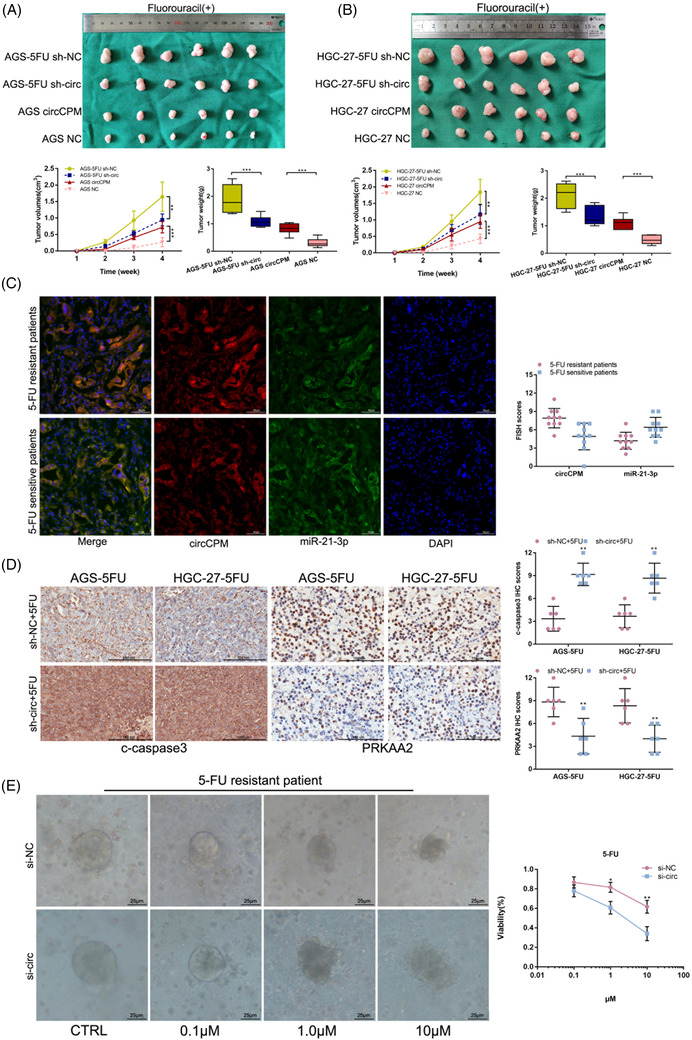FIGURE 7.

Circular CPM (CircCPM) strengthenes 5‐fluorouracil (5‐FU) resistance in gastric cancer (GC) cells in vivo. (A) Xenograft tumours comprising AGS‐5FU or AGS transfected with sh‐circ or circCPM overexpression vector with 5‐FU treatment (0.5 mg/kg, three times a week) at the end of the experiment. Left lower panel: Tumour volumes were measured weekly in all mice. Right lower panel: Tumours were extracted and weighed. (B) Xenograft tumours comprising HGC‐27‐5FU or HGC‐27 transfected with sh‐circ or circCPM overexpression vector with 5‐FU treatment (0.5 mg/kg, three times a week) at the end of the experiment. Left lower panel: Tumour volumes were measured weekly in all mice. Right lower panel: Tumours were extracted and weighed. (C) Fluorescence in situ hybridization (FISH) showing the co‐localization of circCPM (red) and miR‐21‐3p (green) in 5‐FU‐resistant or 5‐FU‐sensitive GC tissues from patients. FISH scores of circCPM and miR‐21‐3p were further calculated in 10 5‐FU‐resistant and 10 5‐FU‐sensitive patient tissues. Nuclei were stained with 4,6‐diamino‐2‐phenyl indole (DAPI). Scale bar = 10 μm. (D) Immunohistochemical staining against c‐caspase3 and PRKAA2 were used to determine the effects of circCPM on c‐caspase3 and PRKAA2 in xenograft tumours. Scale bar = 200 μm. (E) Representative picture and cell viability assay of GC organoid transfected with si‐circ after treatment with different concentrations of 5‐FU (48 h). Scale bar = 25 μm. (Graph represents mean ± SD; *p < .05, **p < .01 and ***p < .001)
